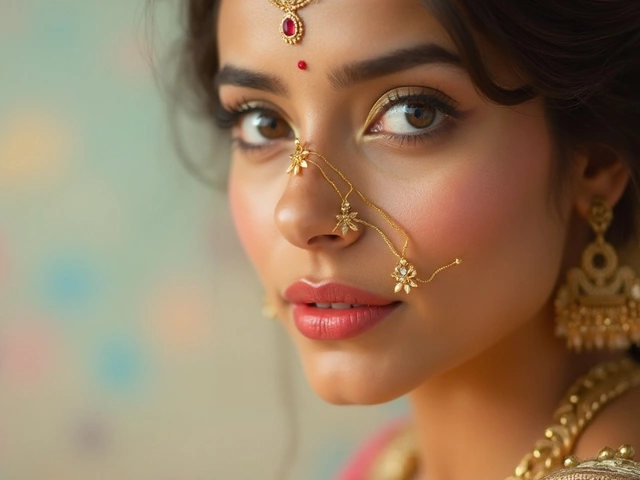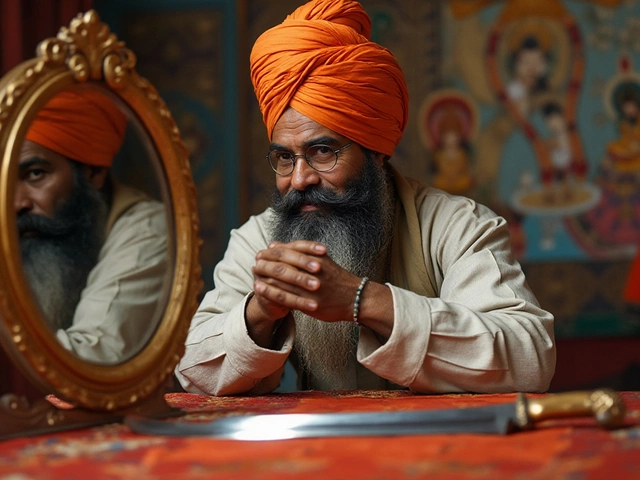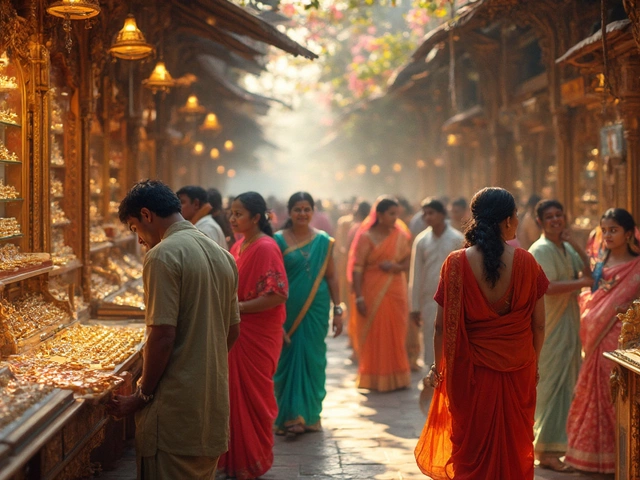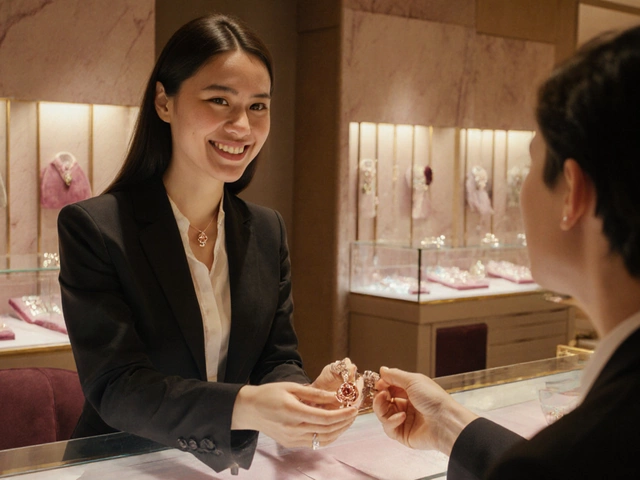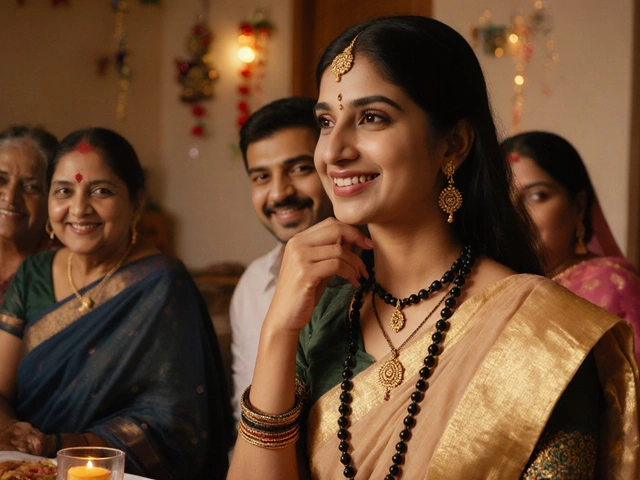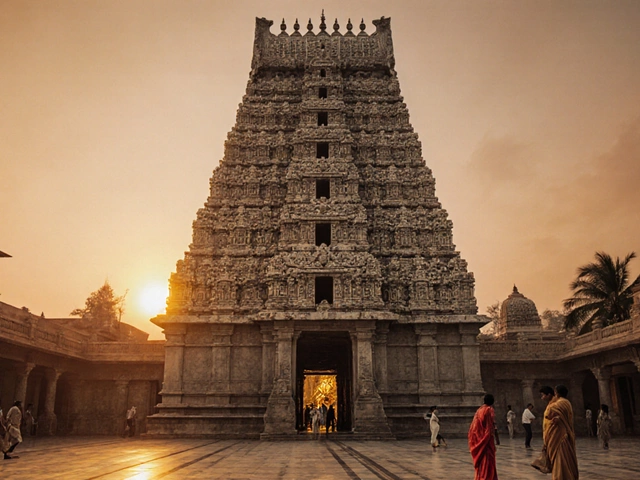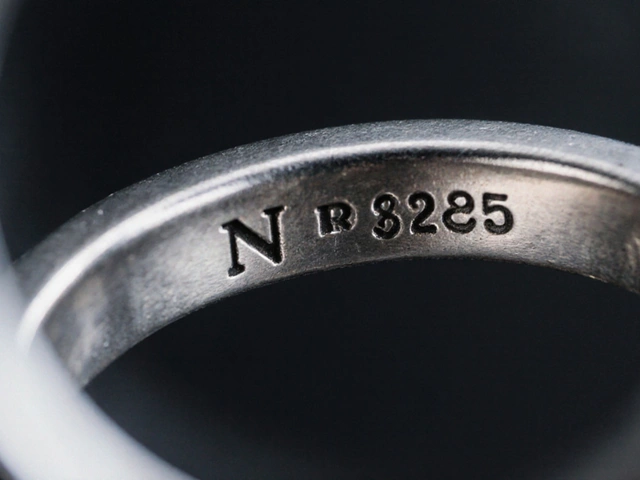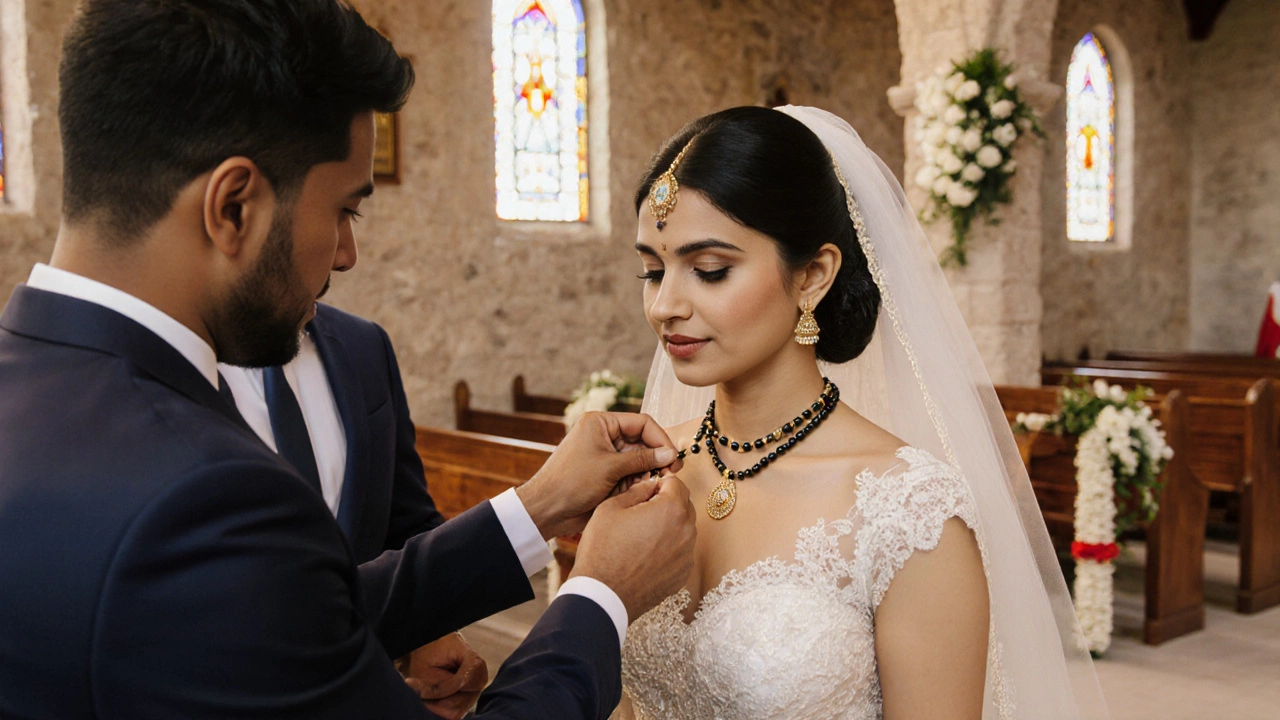
Ever noticed a Christian bride wearing a gold chain with a pendant and wondered why? That piece is often a Mangalsutra, a tradition that started in Hindu culture but has found a unique place in many Indian Christian weddings. Below we unpack the why, the how, and what it looks like today.
What is a Mangalsutra?
Mangalsutra is a traditional Indian necklace, usually made of gold and black beads, that a groom ties around the bride’s neck during the wedding ceremony as a symbol of marital union. The term comes from the Sanskrit words “mangal” (auspicious) and “sutra” (thread). Historically it signalled that a woman was married, offering protection and blessings from the divine.
How Mangalsutra Entered Christian Weddings
Christianity spread across India centuries ago, but the faith often blended with local customs. In regions like Kerala, Goa, and parts of the South, Christian families adopted many cultural markers from Hindu society, including the wedding attire. When missionaries arrived, they respected existing rituals that didn’t conflict with core Christian doctrine, allowing communities to keep the mangalsutra as a cultural, not theological, element.
Documented evidence from the 19th‑century church records in Kerala shows brides receiving a gold chain with a pendant after the nuptial vows. The practice was reinforced by social expectations: a married woman wearing the chain was instantly recognized, a practical benefit in tightly knit villages.
Why Christians Choose to Wear It
Christianity is a monotheistic religion rooted in the life and teachings of Jesus Christ, emphasizing sacramental marriage as a covenant before God. For many Indian Christians, the mangalsutra adds a layer of cultural identity without altering the theological meaning of marriage. It serves three main purposes:
- Cultural continuity: Families preserve a visible link to their regional heritage.
- Social signalling: The chain instantly tells the community that a woman is married, which historically helped protect her reputation.
- Spiritual symbolism: While the original Hindu meaning ties to goddess Lakshmi, many Christian couples reinterpret the pendant as a reminder of Christ’s love and the covenant they’ve entered.
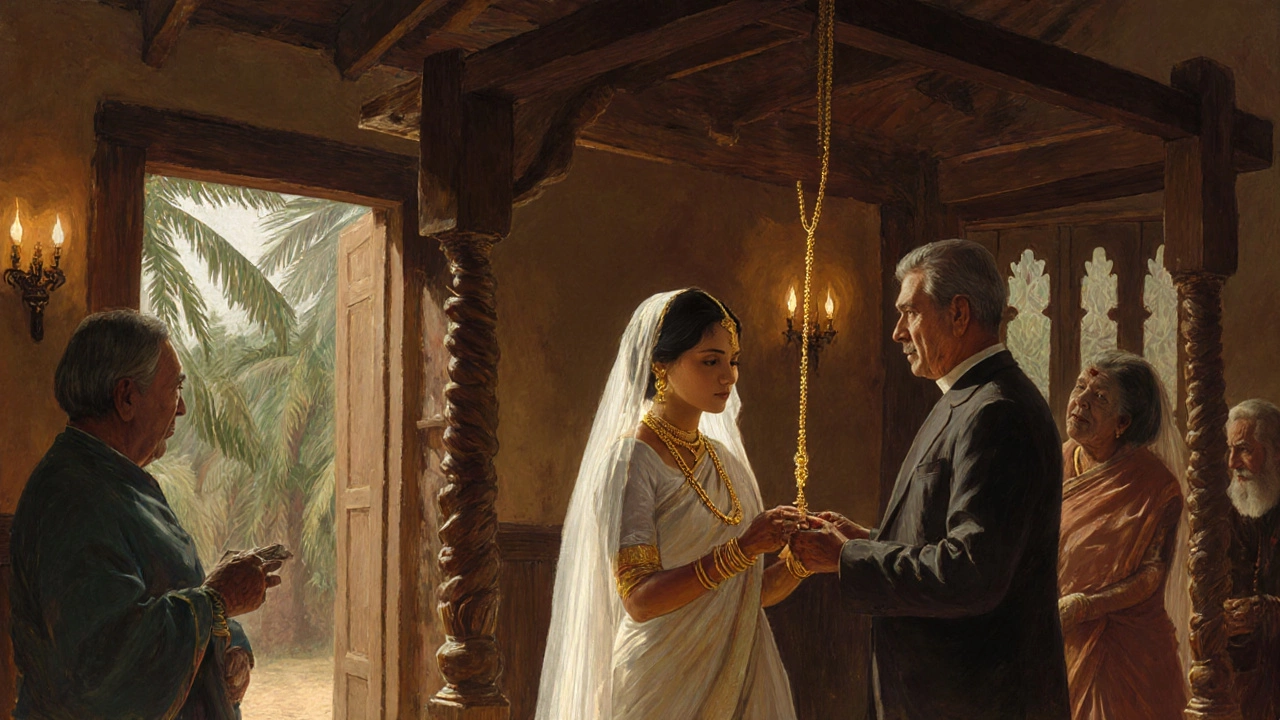
Symbolic Elements Re‑interpreted
Key symbols on a mangalsutra often carry new Christian nuance:
- Black beads traditionally ward off evil spirits; Christians see them as a reminder of Jesus’ sacrifice and the triumph over darkness.
- Gold chain represents purity and value; in a Christian context, it mirrors the “ring of gold” mentioned in Proverbs 3:15.
- Pendant charms may depict a cross, a dove, or a simple oval; each is chosen to reflect personal devotion.
Design Variations Popular Among Christians
Modern Christian brides blend tradition with contemporary style. Below is a quick guide to the most common designs and what they convey:
| Design | Key Features | Christian Interpretation |
|---|---|---|
| Classic Gold with Black Beads | 24‑karat gold chain, 10-12 black seed beads, simple oval pendant | Marriage as a protective covenant; pendant may hold a tiny cross |
| Rose Gold with Pearl Drops | Rose gold, mother‑of‑pearl beads, teardrop charm | Grace and purity; teardrop symbolizes Christ’s tears for humanity |
| Silver‑Plated with Cross | Sterling silver base, silver beads, cross‑shaped pendant | Explicit Christian symbolism; suitable for interfaith couples |
| Minimalist Chain | Thin gold wire, no beads, single bar pendant | Focus on vows rather than ornamentation; modern aesthetic |
When choosing a design, many brides consult both the family jeweler and their pastor to ensure the piece respects both cultural and religious sensibilities.
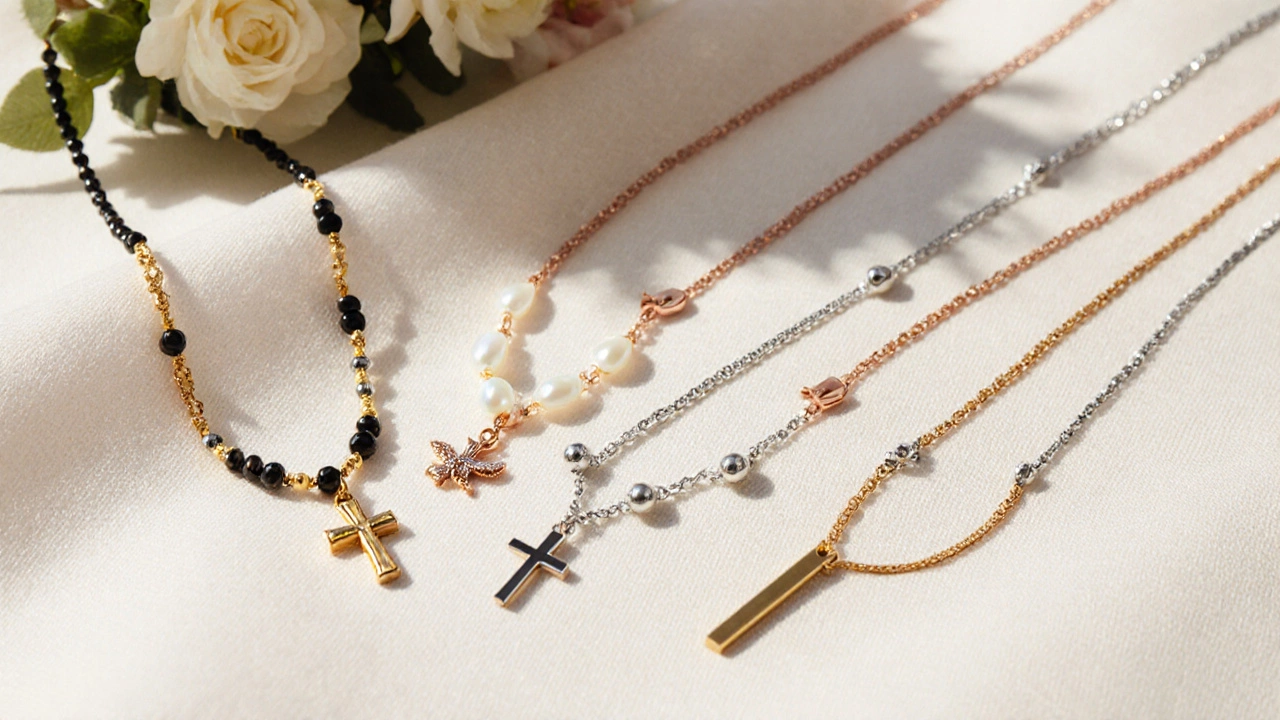
Practical Tips for Brides
- Ask the priest if the mangalsutra will be part of the liturgy; most churches allow it as a cultural accessory.
- Consider the weight. Traditional gold chains can be hefty; a lighter alloy still looks authentic.
- Plan the handoff. In Hindu weddings the groom ties the mangalsutra; in Christian ceremonies the best man or a family elder often presents it after the vows.
- Maintain the chain. Gold should be polished every few months; black beads can be gently wiped with a soft cloth.
FAQ - Quick Answers
Is wearing a mangalsutra allowed in all Christian denominations?
Most mainline denominations (Catholic, Anglican, Protestant) see it as a cultural tradition, not a doctrinal issue. However, some evangelical groups prefer to keep ceremonies strictly biblical, so it’s best to ask the officiant.
Can a non‑Indian Christian bride wear a mangalsutra?
Absolutely. The piece has become a global symbol of love in many diaspora communities. Choose a design that feels personal rather than purely ethnic.
What biblical verses are often associated with the mangalsutra?
Couples frequently cite Ephesians 5:31 - “For this reason a man will leave his father and mother and be united to his wife, and the two will become one flesh” - as the theological backdrop for the physical symbol.
Do I need to wear the mangalsutra every day?
It’s a personal choice. Some women keep it on daily as a reminder of vows; others wear it only on special occasions.
How can I incorporate my own faith symbols into the mangalsutra?
Ask a jeweler to add a small cross, a dove charm, or even a tiny engraved verse onto the pendant. The design stays recognizably a mangalsutra while reflecting personal devotion.
In short, the mangalsutra has traveled from a Hindu marriage rite to become a beloved cultural accessory for many Indian Christians. It bridges tradition and faith, offering a beautiful visual cue that a woman is married, cherished, and spiritually united.

